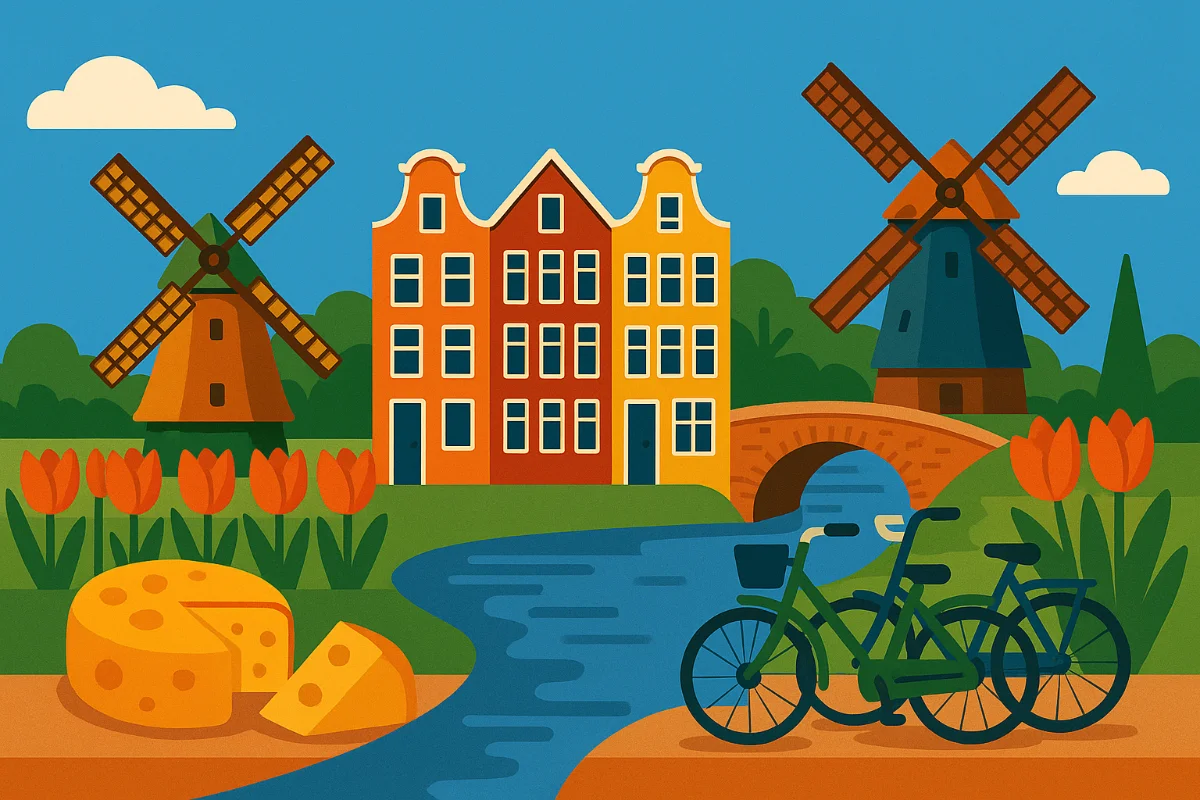Introduction: More Than One
We often need to talk about more than one person, place, or thing. To do this, we need to make nouns plural. In Dutch, there are two main regular ways to form plurals: adding -en or adding -s. This chapter covers these regular patterns.
Rule 1: Add -en (The Most Common Rule)
Most Dutch nouns form their plural by adding -en to the singular form.
stoel(chair) ->stoelen(chairs)deur(door) ->deuren(doors)dag(day) ->dagen(days)week(week) ->weken(weeks)telefoon(telephone) ->telefoons(telephones)
Spelling Adjustments with -en:
Sometimes, adding -en requires spelling changes to maintain the correct vowel sound or pronunciation:
- Short Vowel + Single Consonant: If the singular noun has a short vowel followed by a single consonant, double the consonant before adding
-en.
bus(bus) ->bussenkat(cat) ->kattenbed(bed) ->beddentas(bag) ->tassen
(This keeps the vowel sound short.)
- Long Vowel + Single Consonant: If the singular noun has a long vowel (often spelled with a double vowel like
aa,oo,ee,uu) followed by a single consonant, remove one of the vowel letters before adding-en.
maan(moon) ->manenboom(tree) ->bomenjaar(year) ->jarenmuur(wall) ->muren
(This avoids having three vowel letters together and keeps the sound long because it's now in an open syllable.)
- Singular ending in
-s: If the singular noun ends in an-s, this often changes to a-z-before the-enending.
huis(house) ->huizenreis(journey) ->reizenprijs(price) ->prijzen
- Singular ending in
-f: If the singular noun ends in an-f, this often changes to a-v-before the-enending.
brief(letter) ->brievenwolf(wolf) ->wolvendief(thief) ->dieven
Rule 2: Add -s
While -en is more common, some nouns form their plural by simply adding -s. This typically happens with:
- Nouns ending in unstressed syllables:
-el,-em,-en,-er,-ie.
tafel(table) ->tafelsappel(apple) ->appelsbezum(broom) ->bezemsjongen(boy) ->jongensmeisje(girl) ->meisjes(also follows diminutive rule)leraar(teacher) ->leraars(orleraren- both are used)vakantie(holiday) ->vakantiespositie(position) ->posities
- Nouns ending in a vowel:
a,o,u,i,y. Often an apostrophe ('s) is needed before thesto prevent the vowel sound from changing, especially aftera,o,u,i,y.
oma(grandma) ->oma'sauto(car) ->auto'smenu(menu) ->menu'staxi(taxi) ->taxi'sbaby(baby) ->baby'sradio(radio) ->radio's
- Many loanwords (especially from English) and acronyms:
computer->computersteam->teamsWC(toilet) ->WC's
Important Note on Irregulars
Like English (child -> children, mouse -> mice), Dutch has some common irregular plurals that don't follow these rules (e.g., kind -> kinderen, stad -> steden). These will be covered in the next chapter.
Plural Definite Article
Remember from Chapter 13: ALL plural nouns use the definite article de.
het boek->de boekende stoel->de stoelen
Most Dutch plurals are formed by adding -en (with spelling changes for vowels and f/s consonants) or -s (for words ending in unstressed syllables or vowels). Pay close attention to the spelling rules when adding -en.

